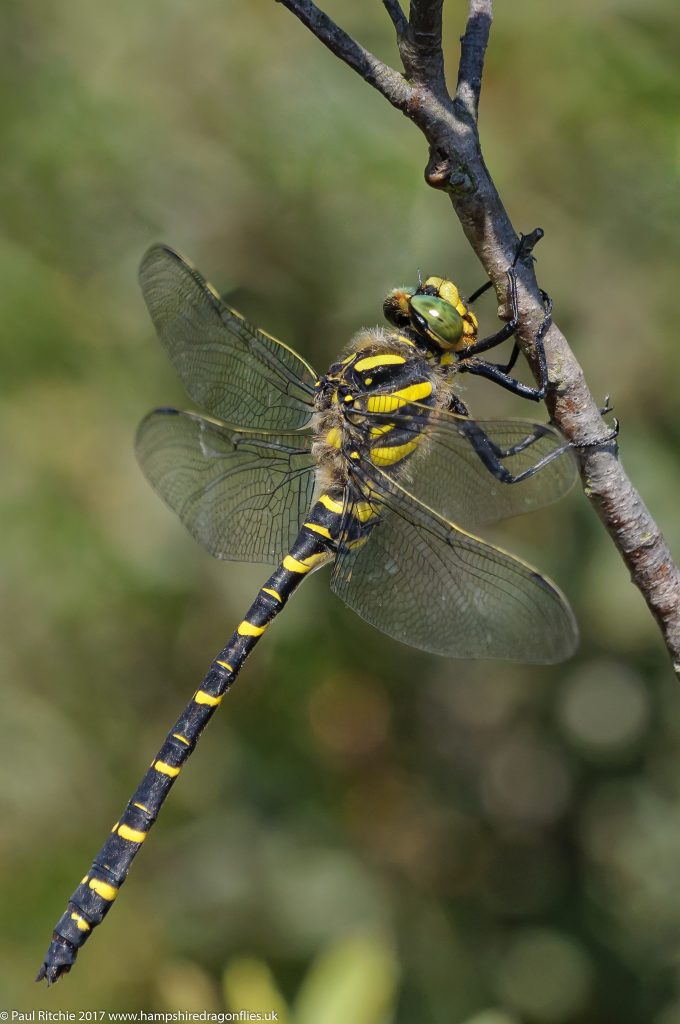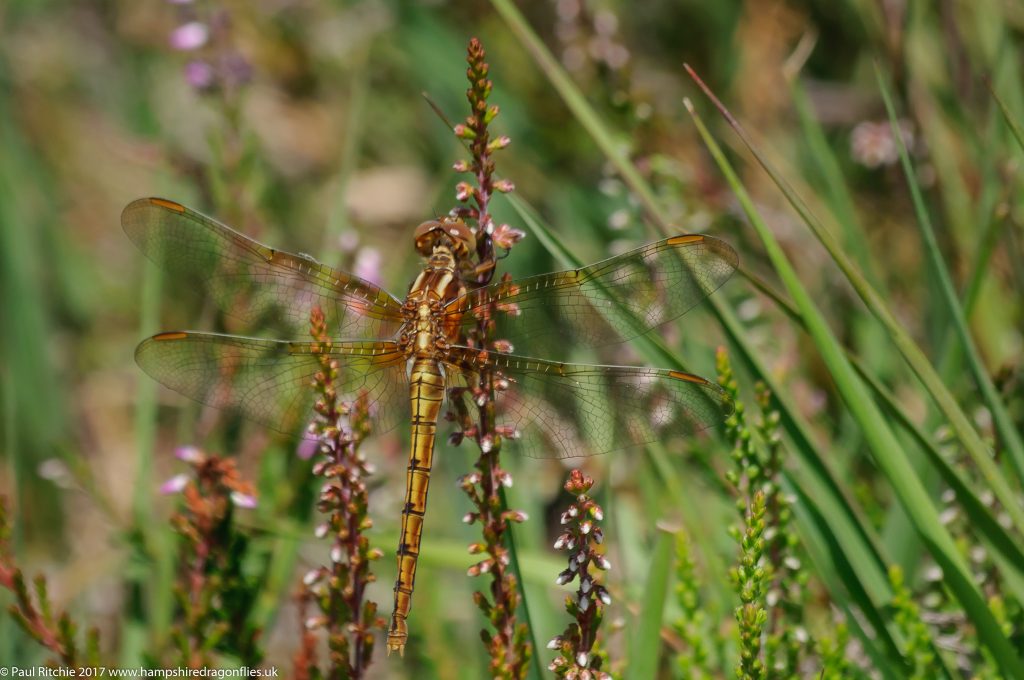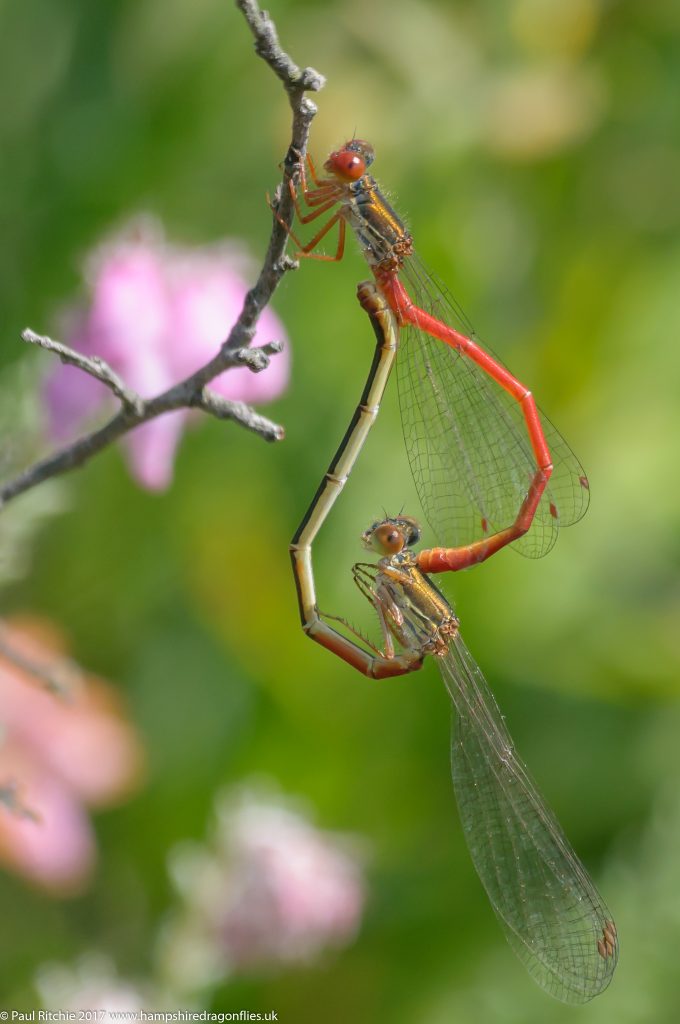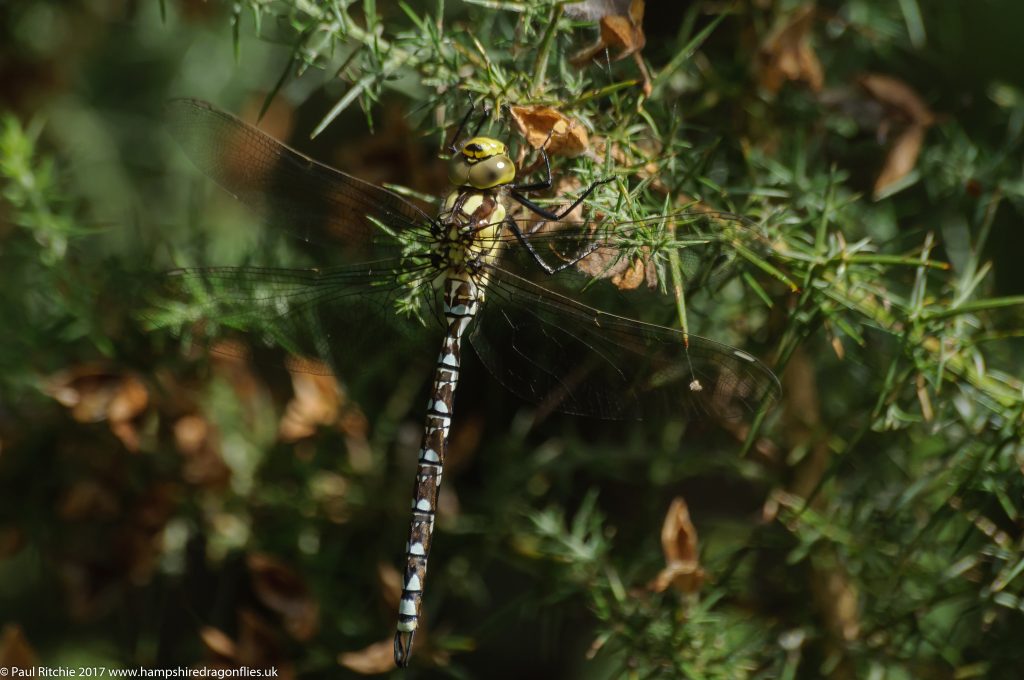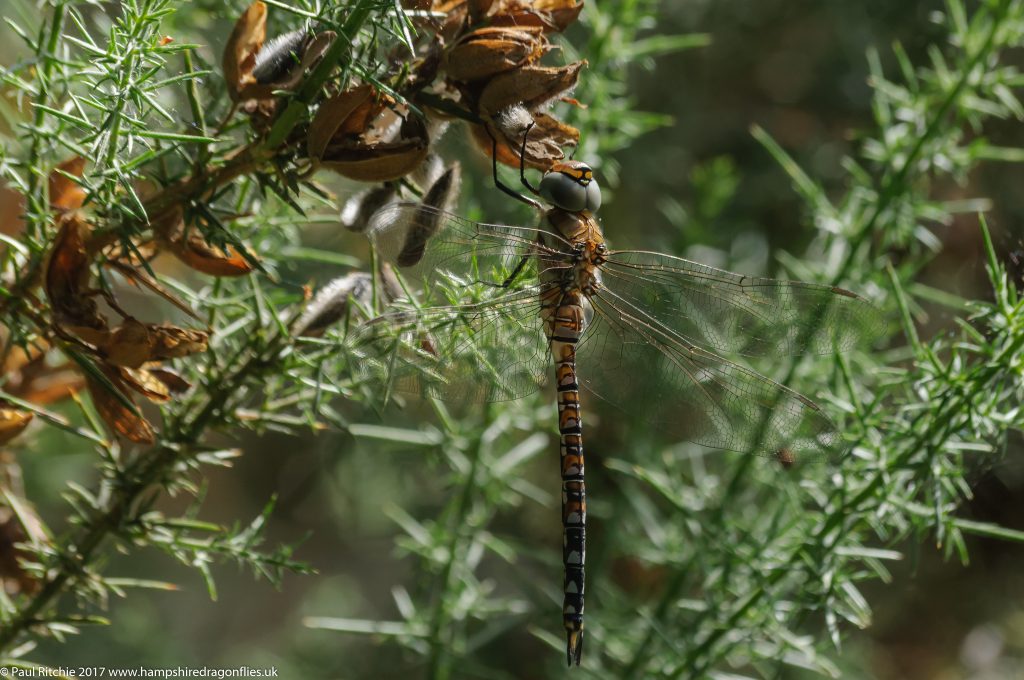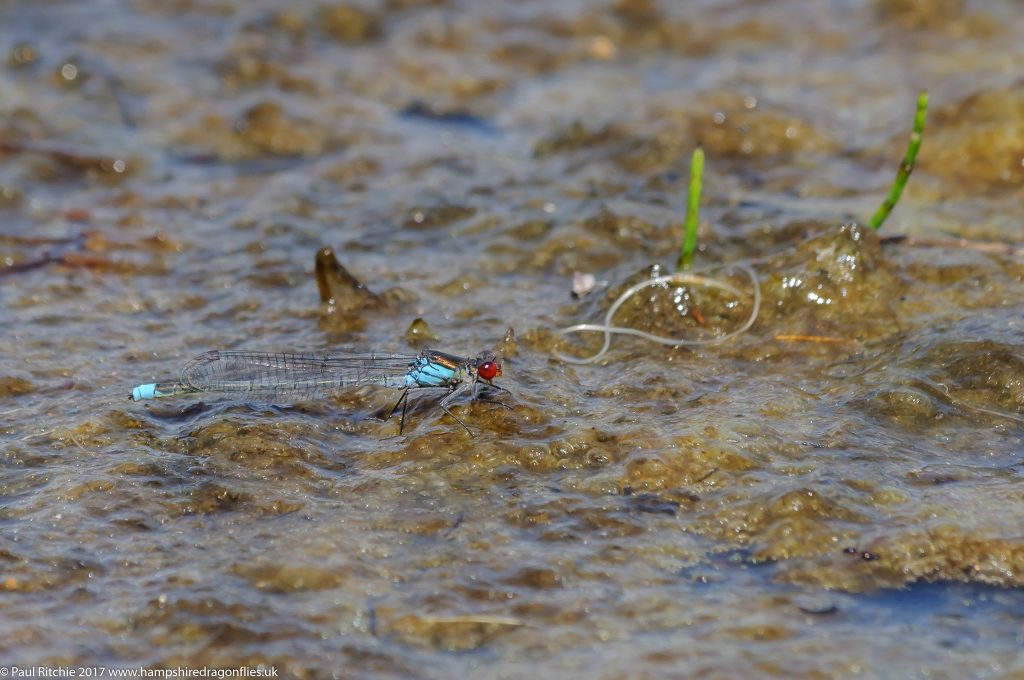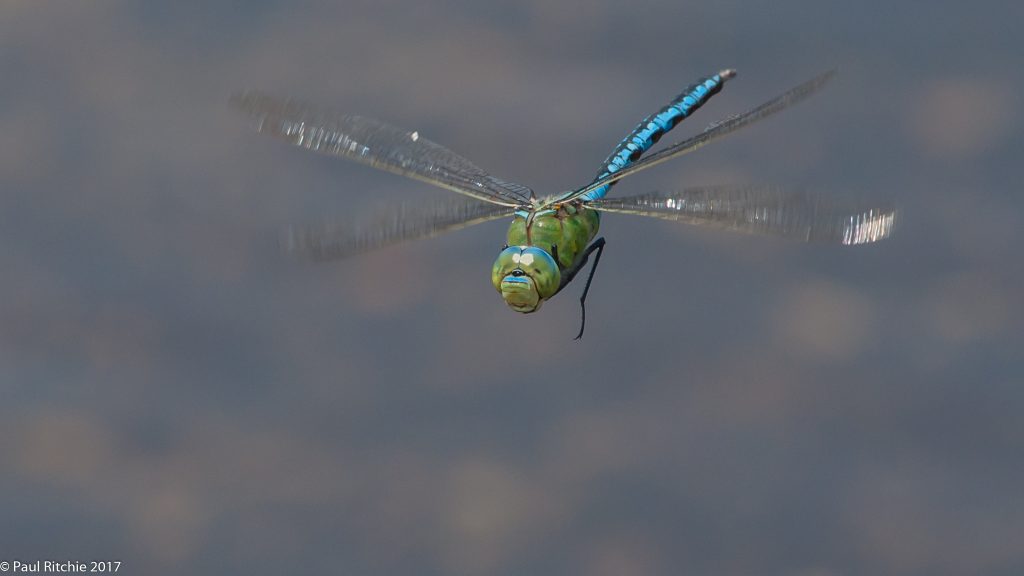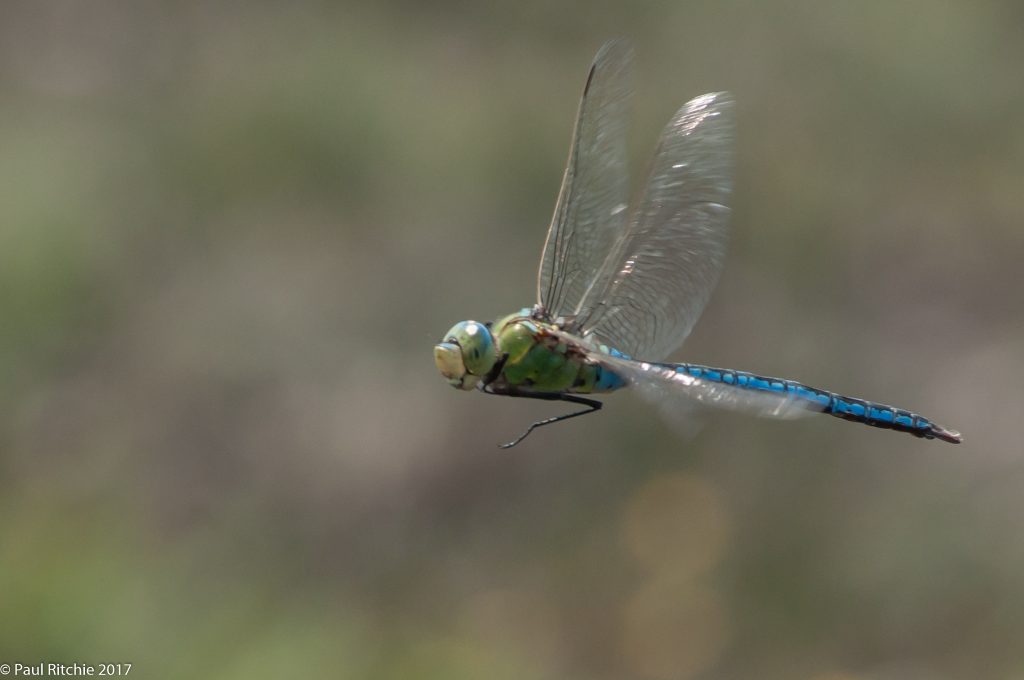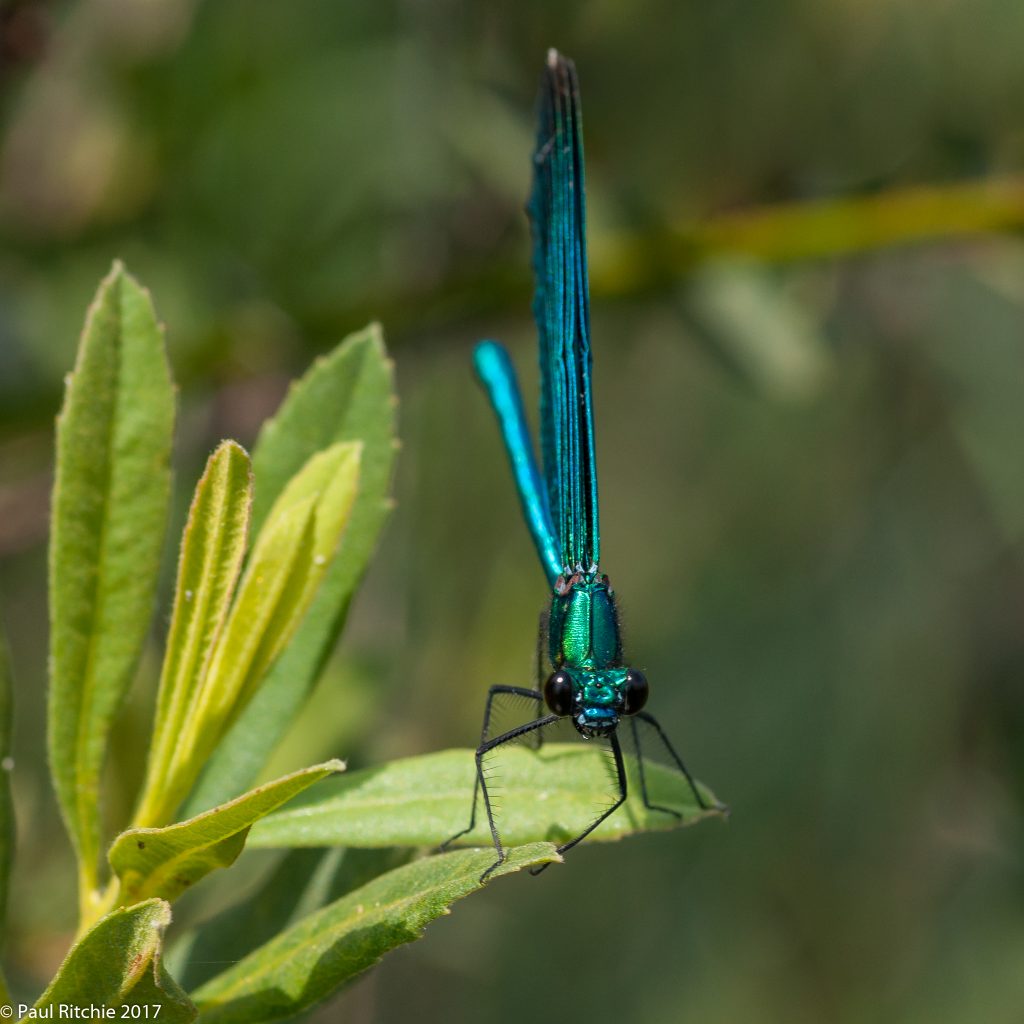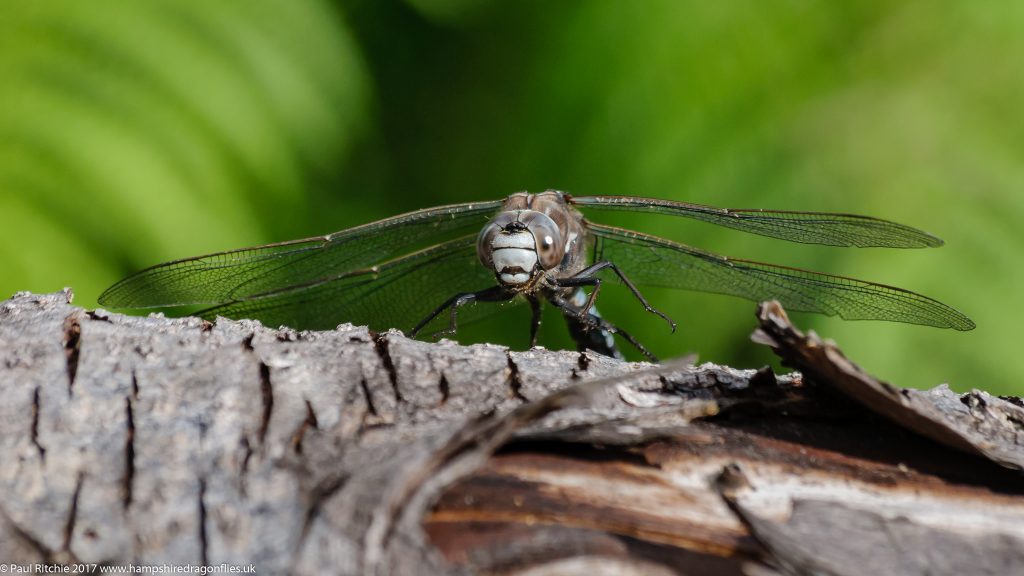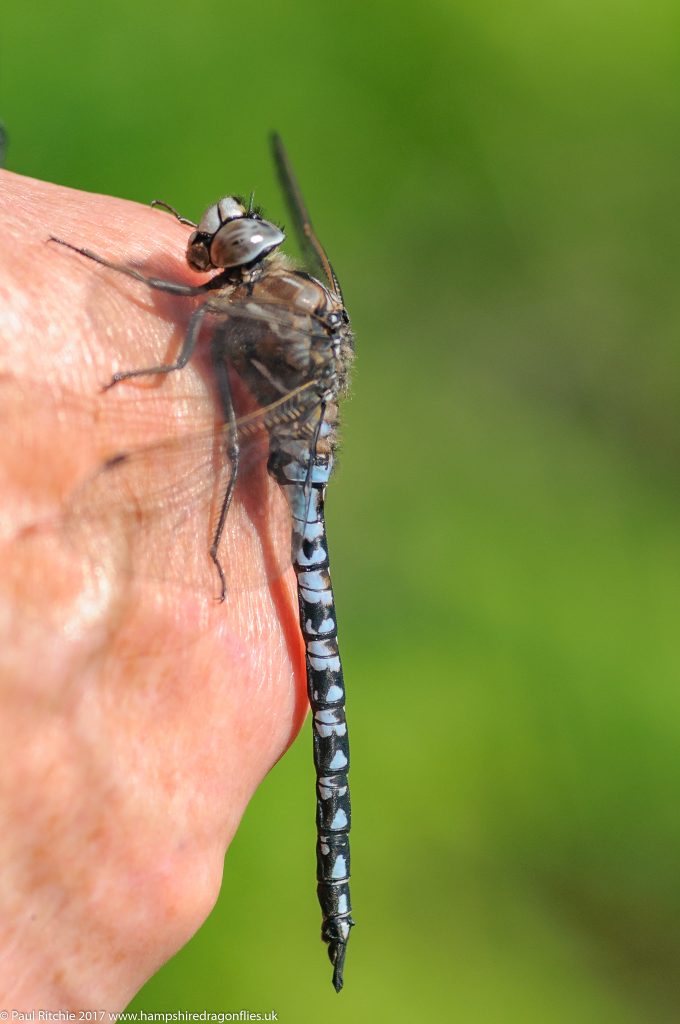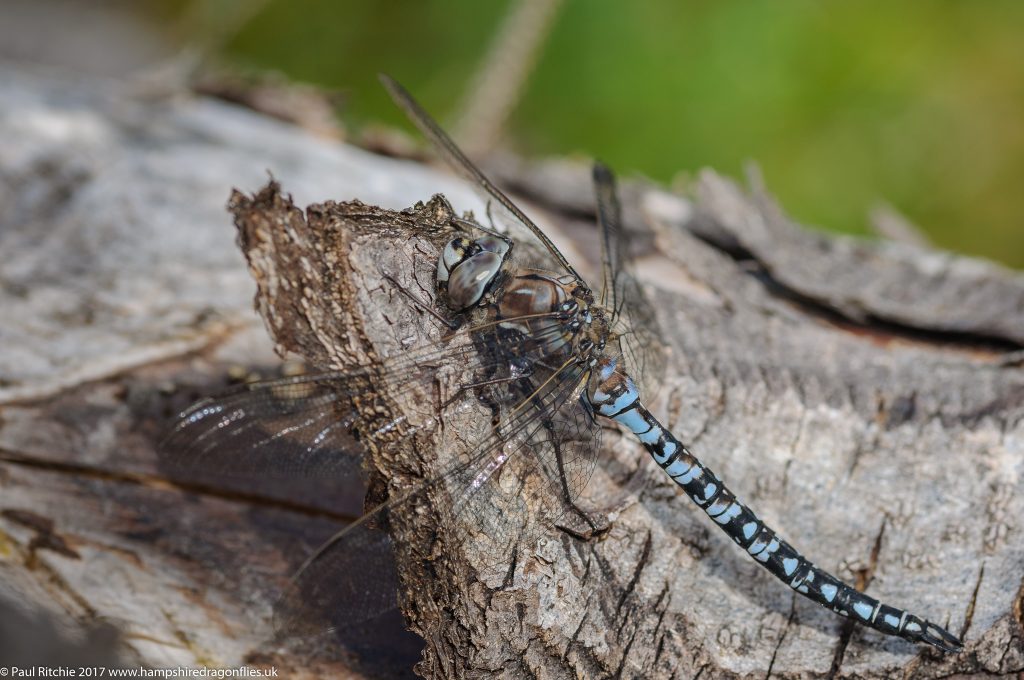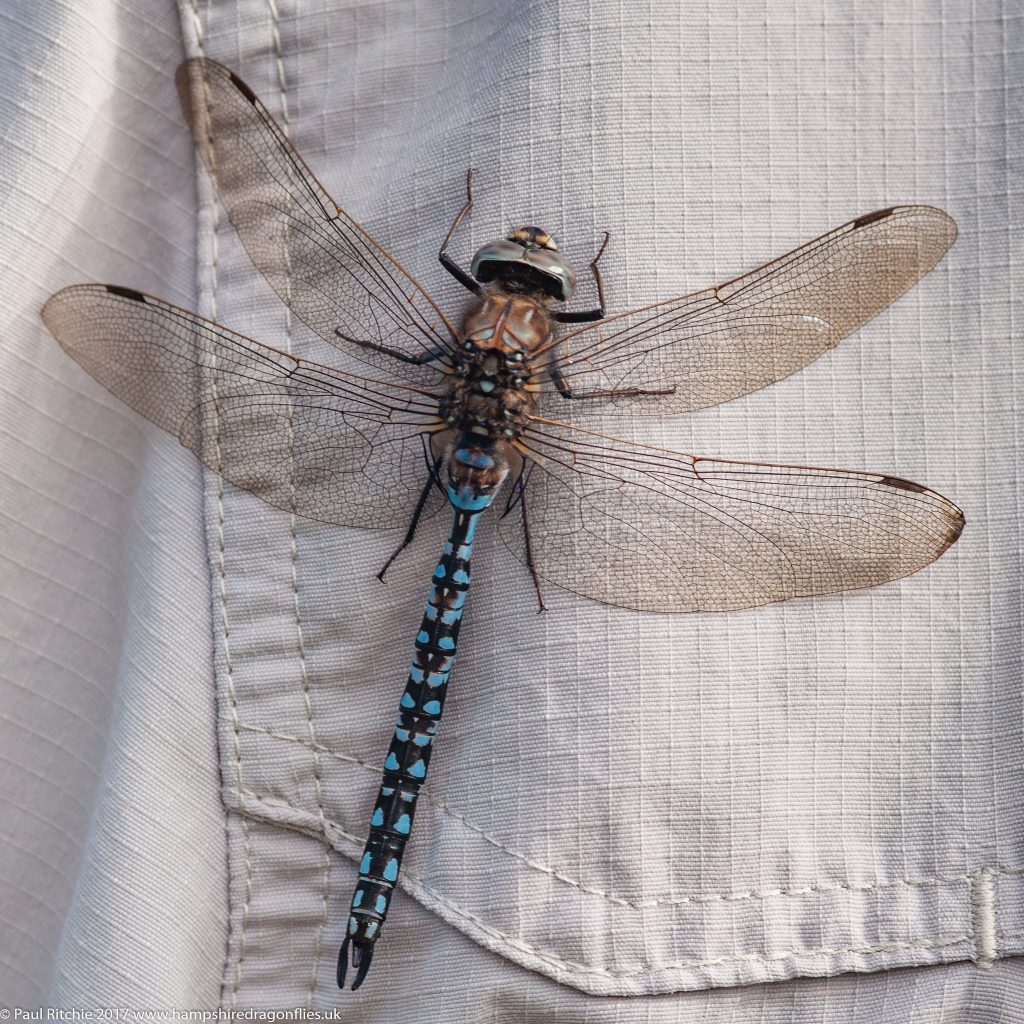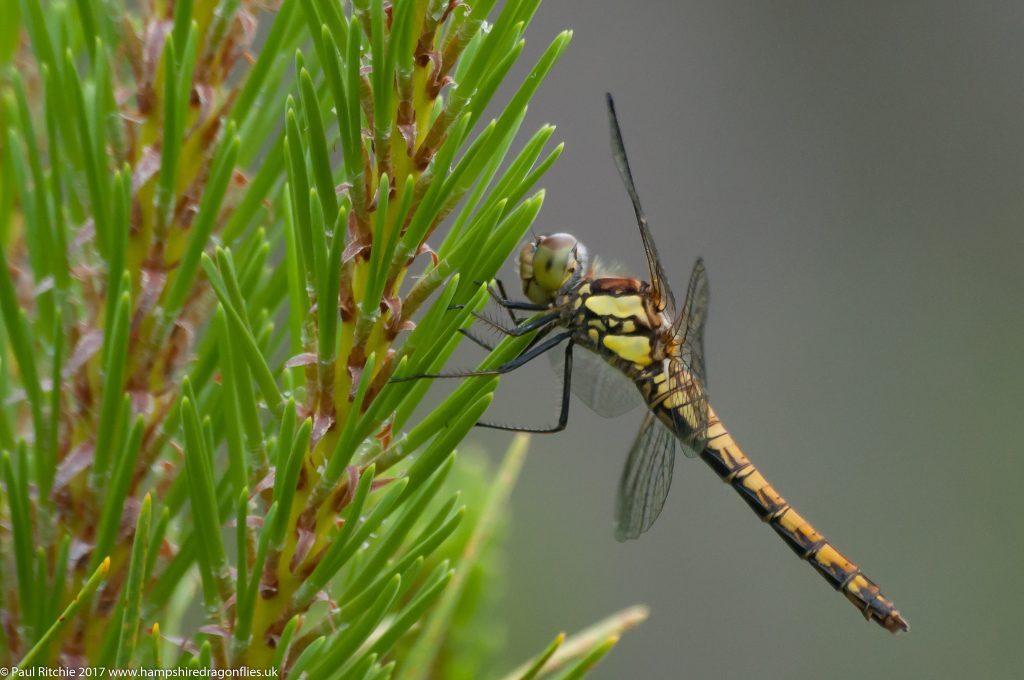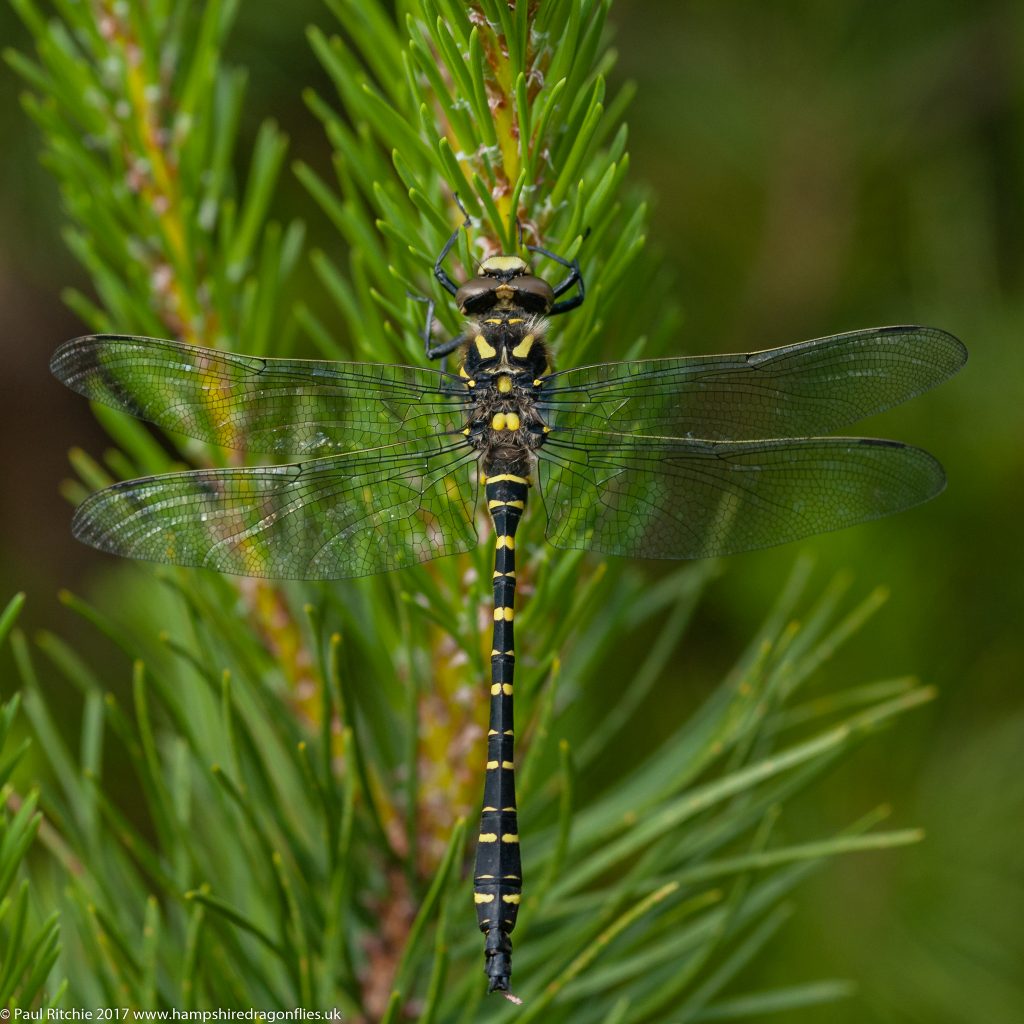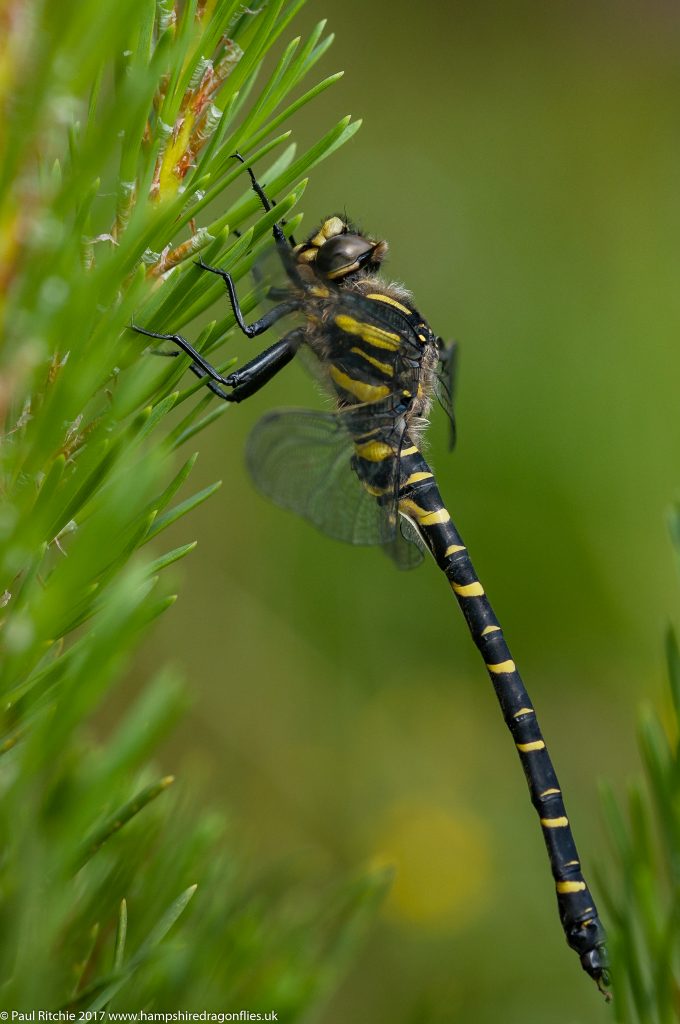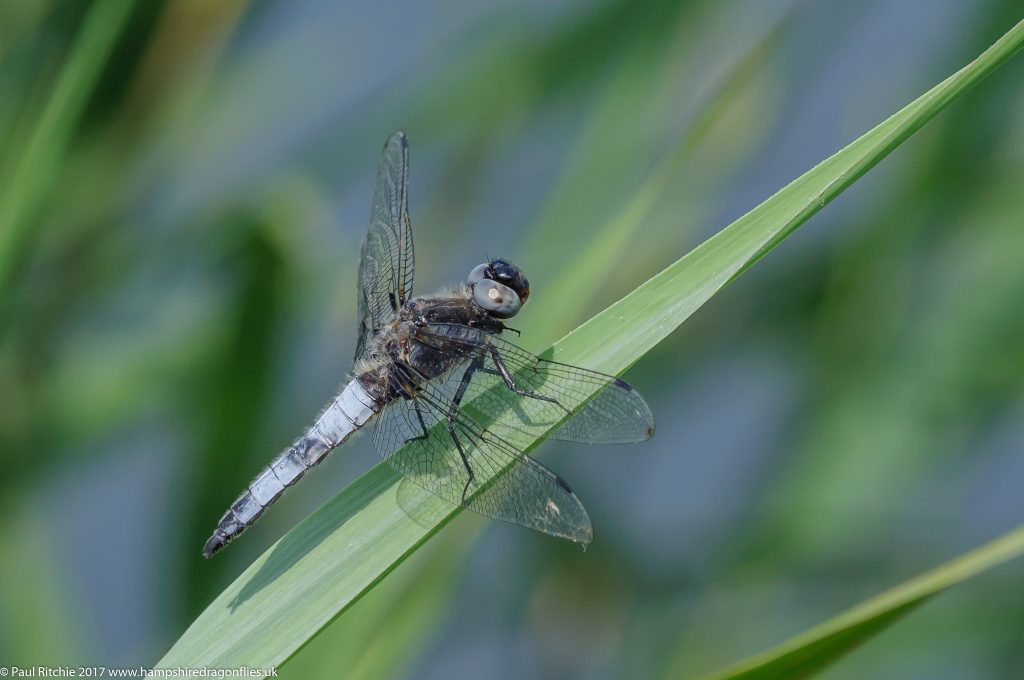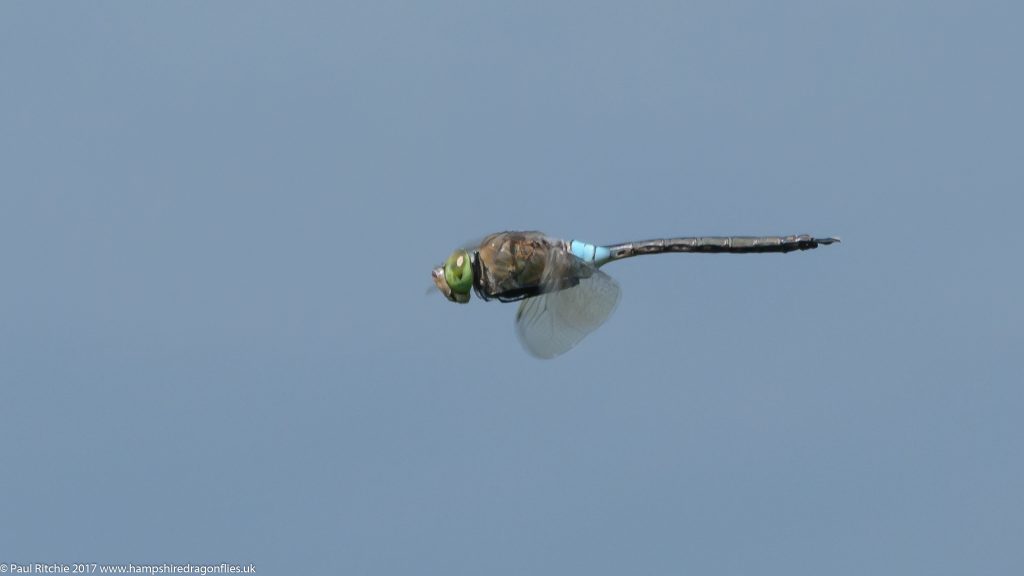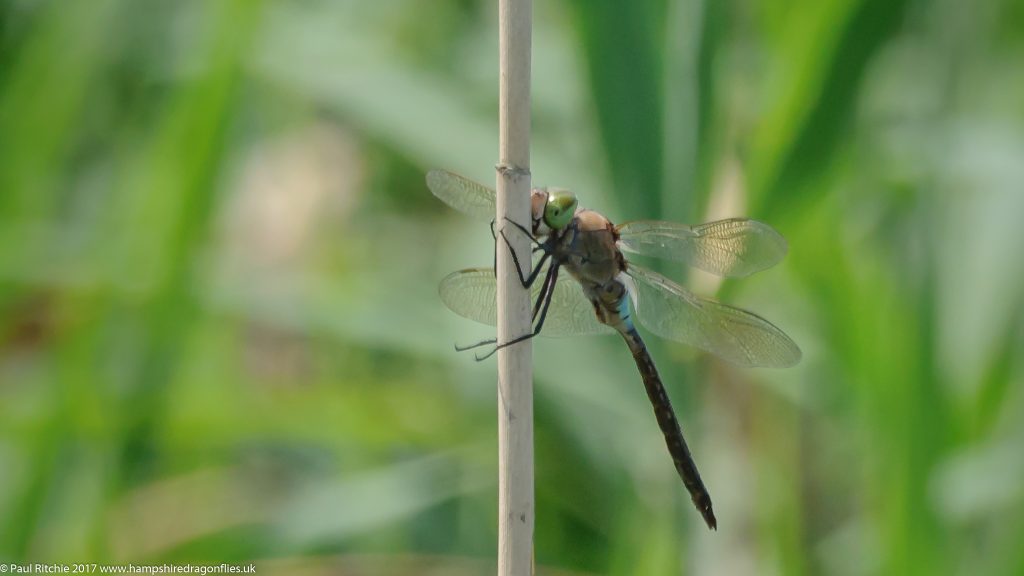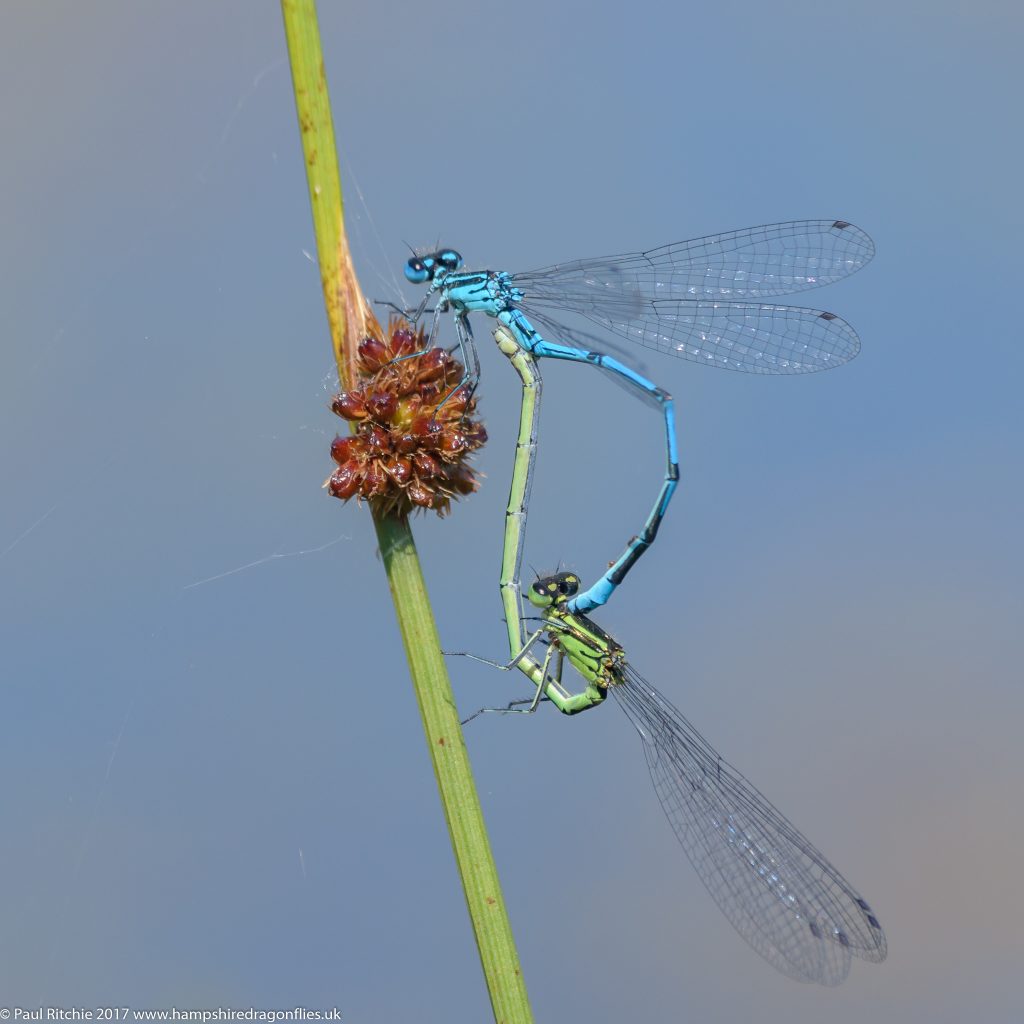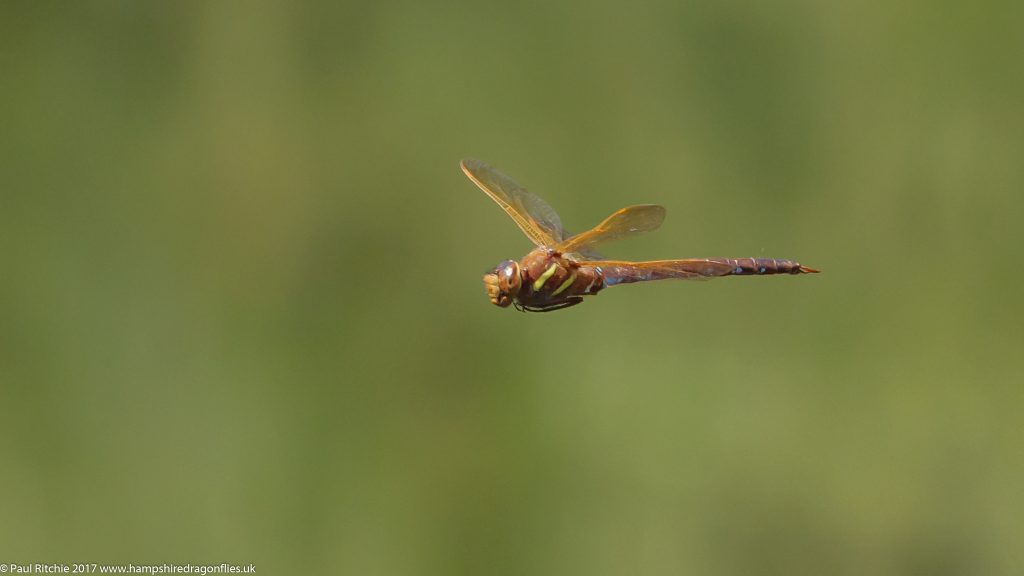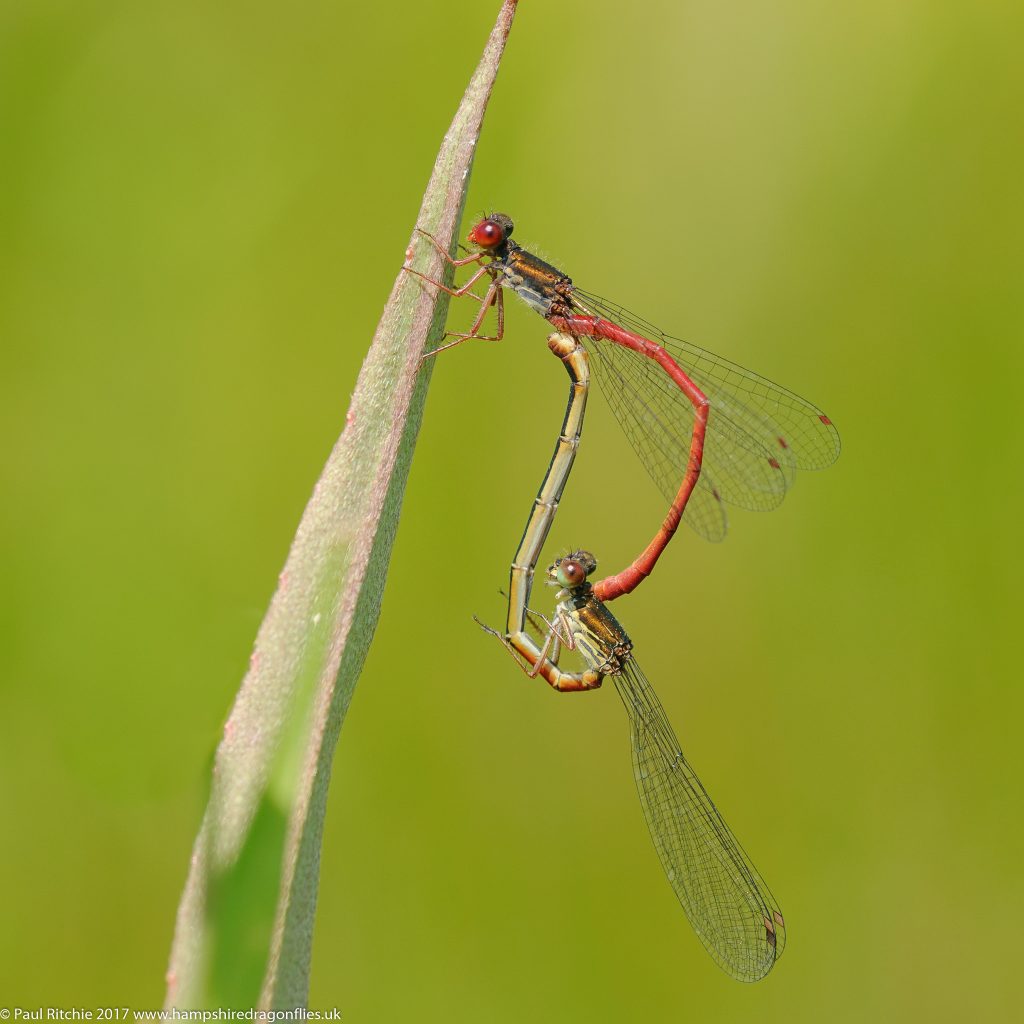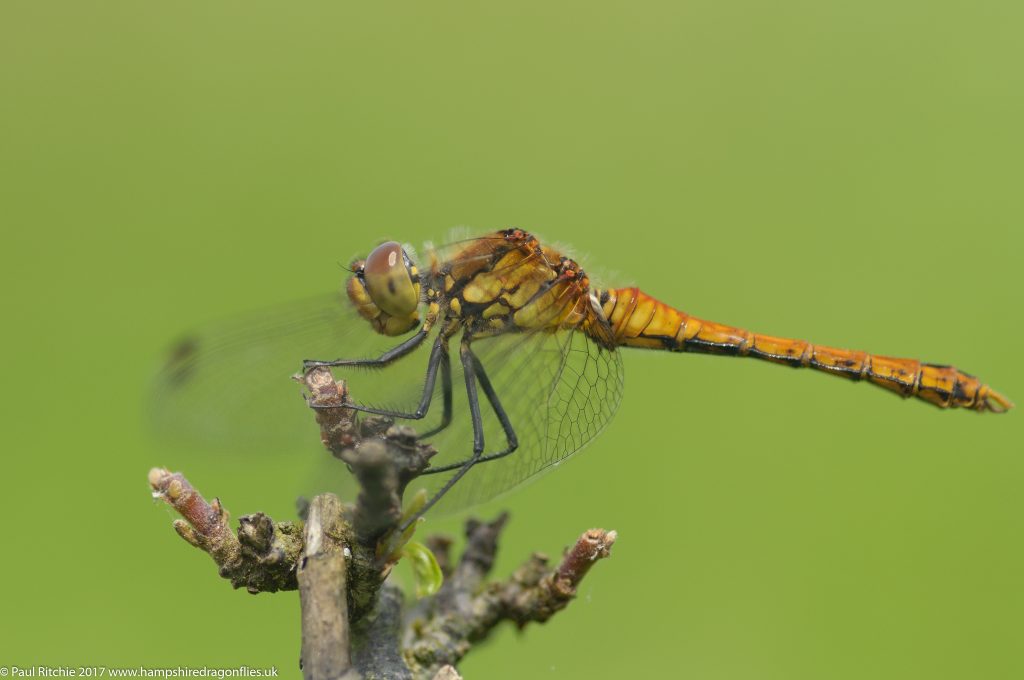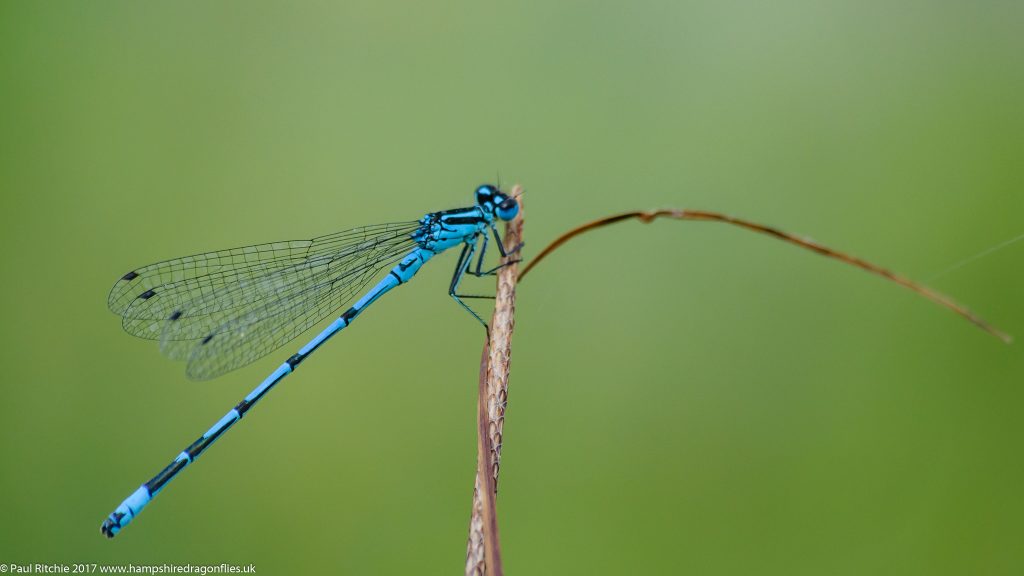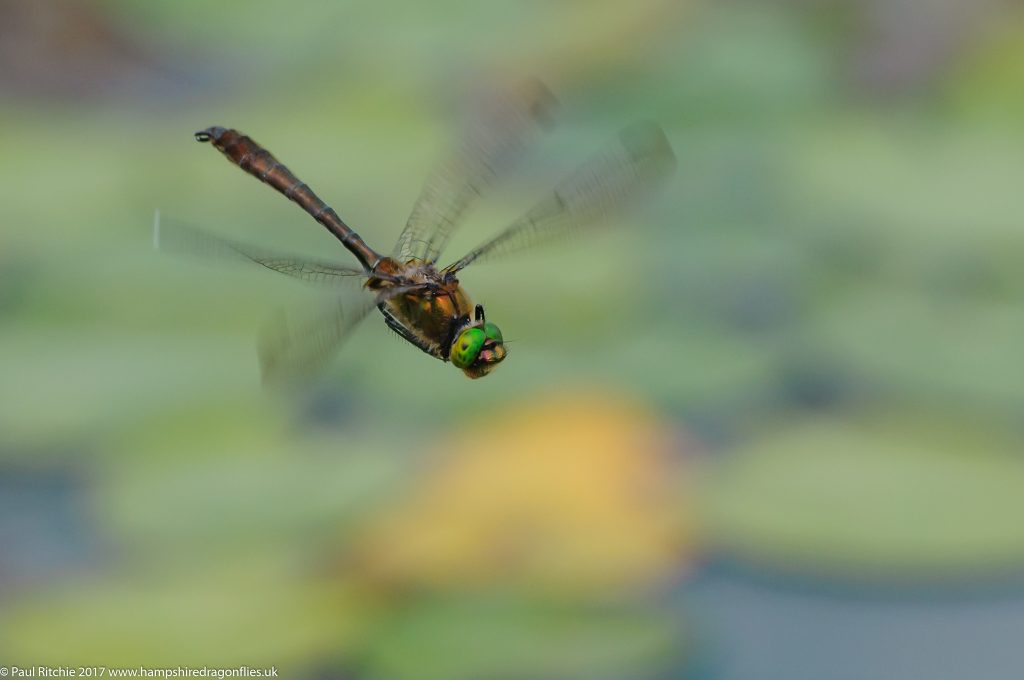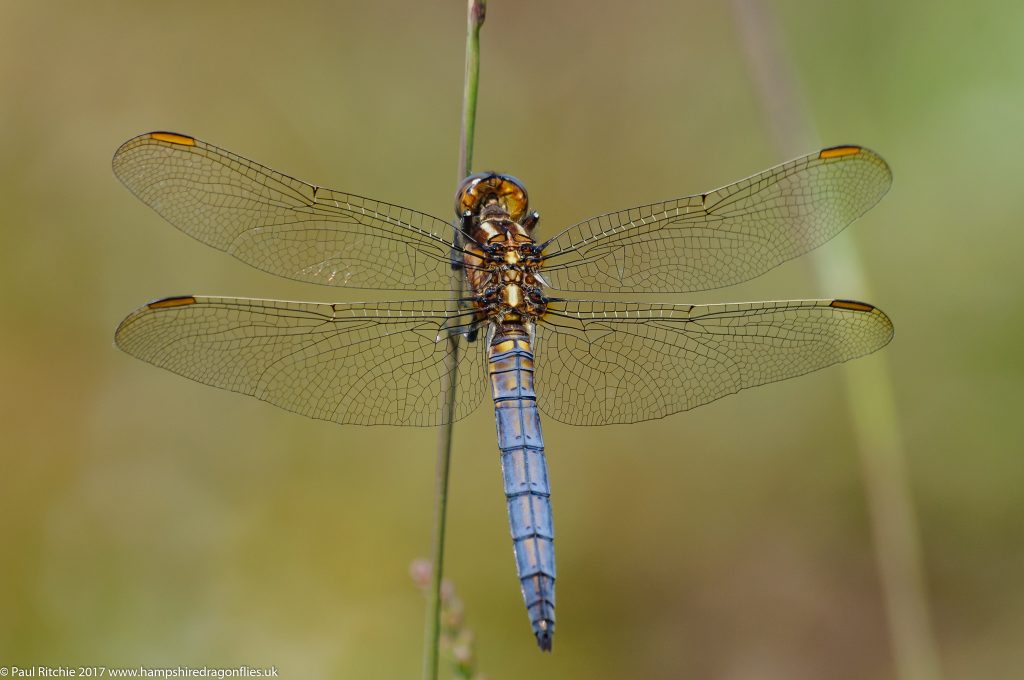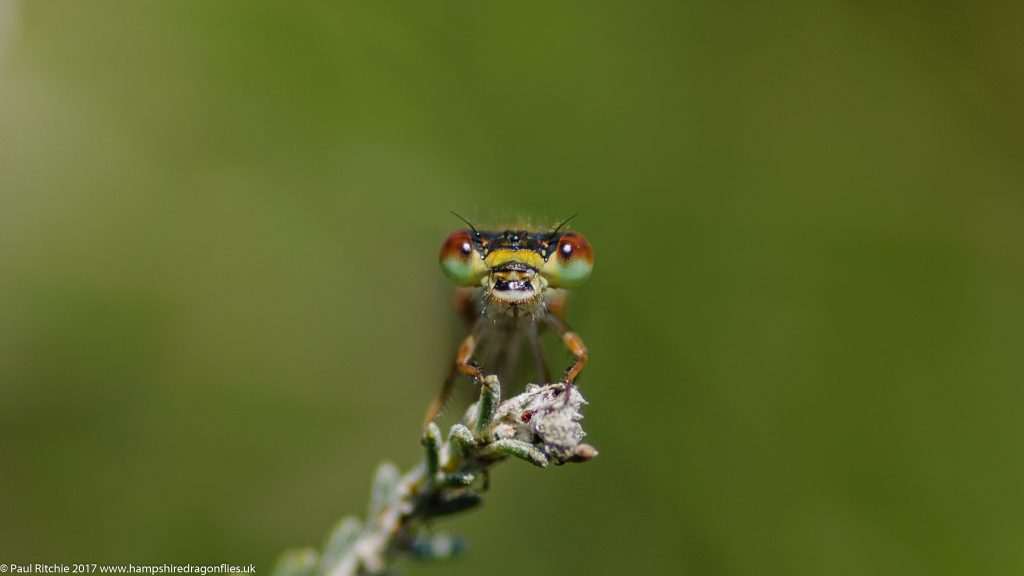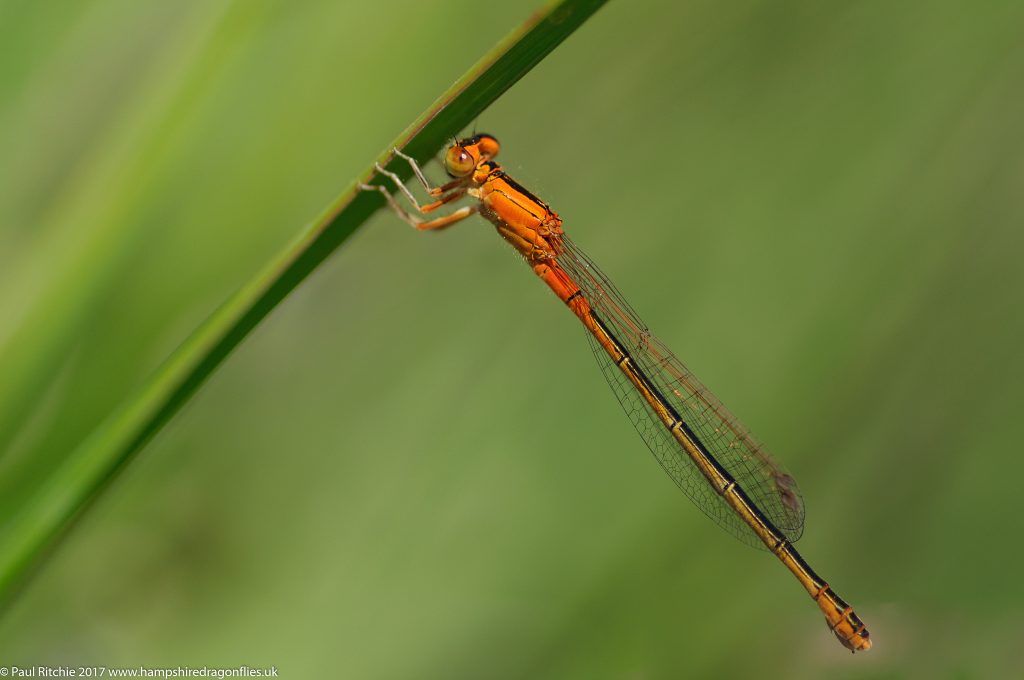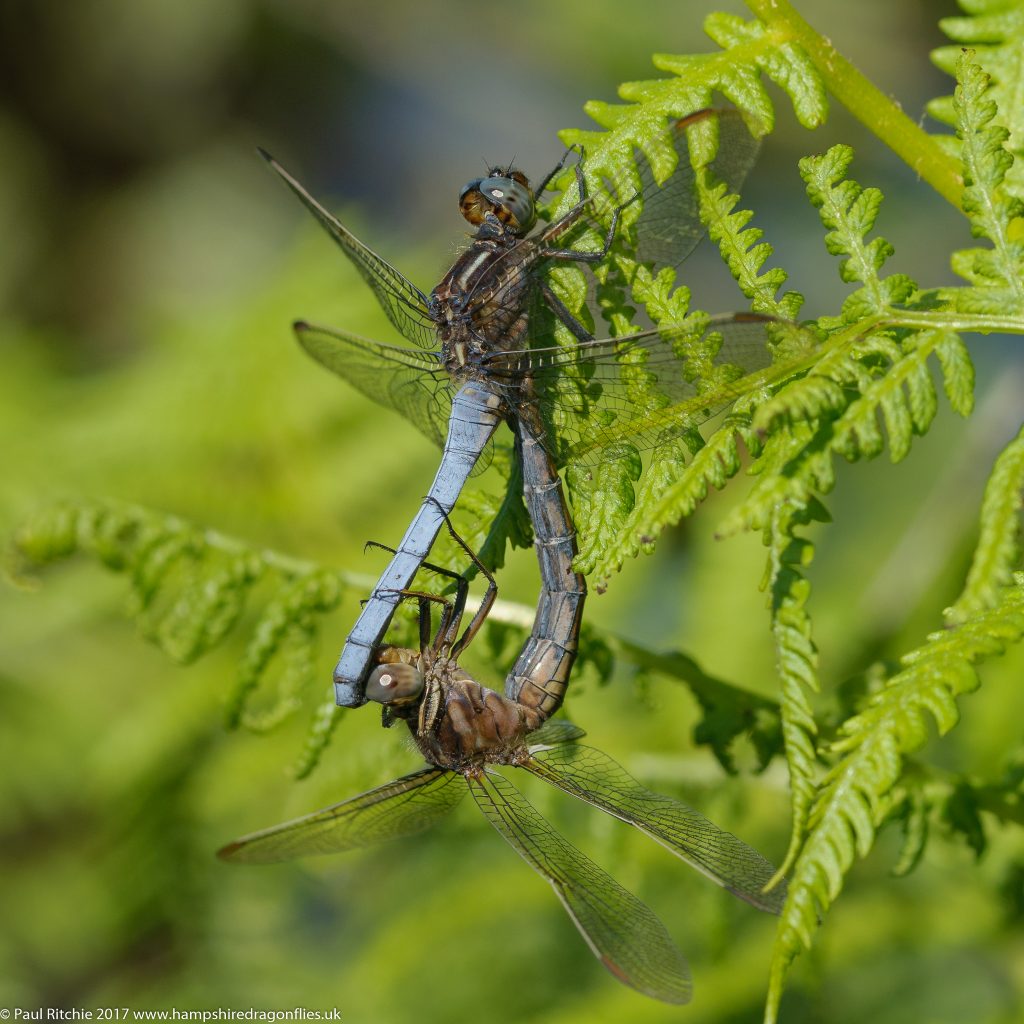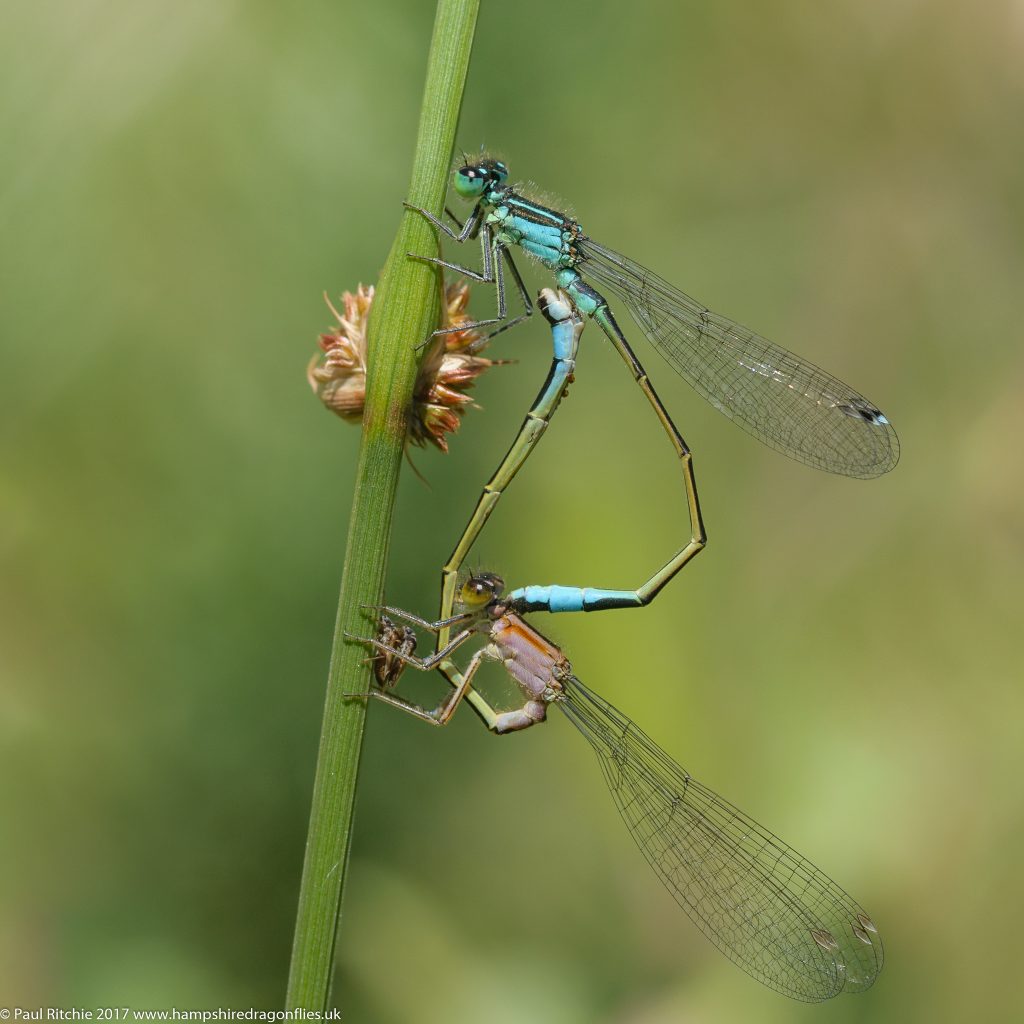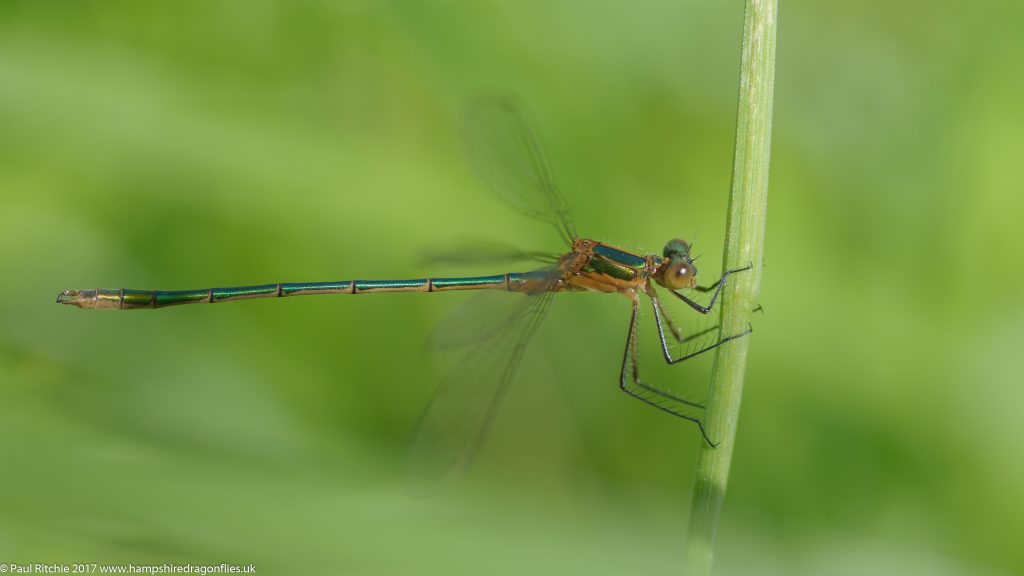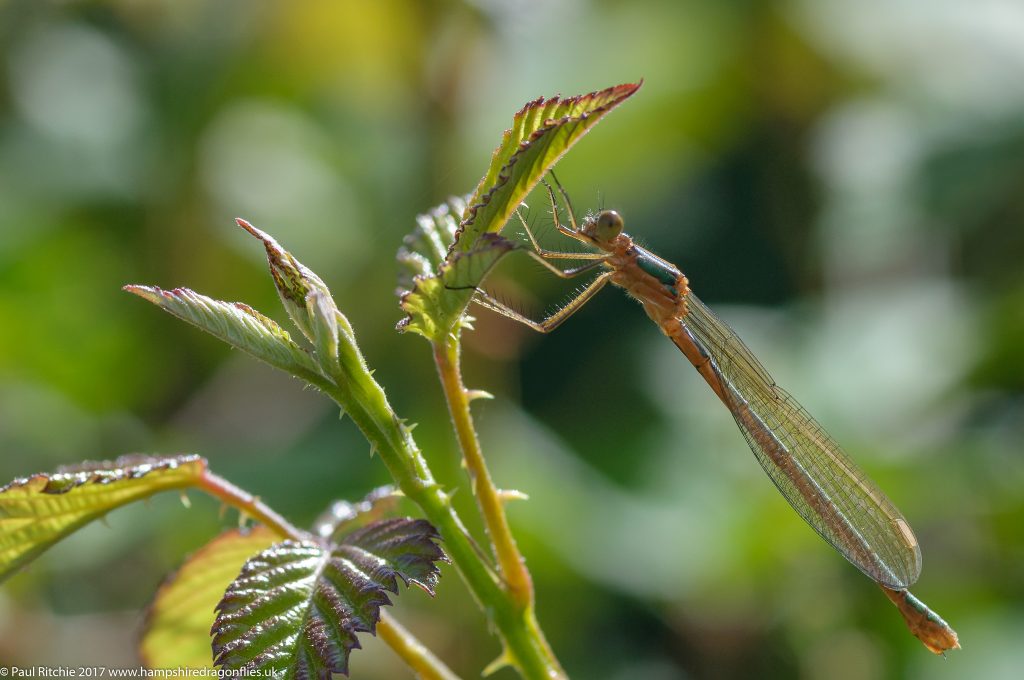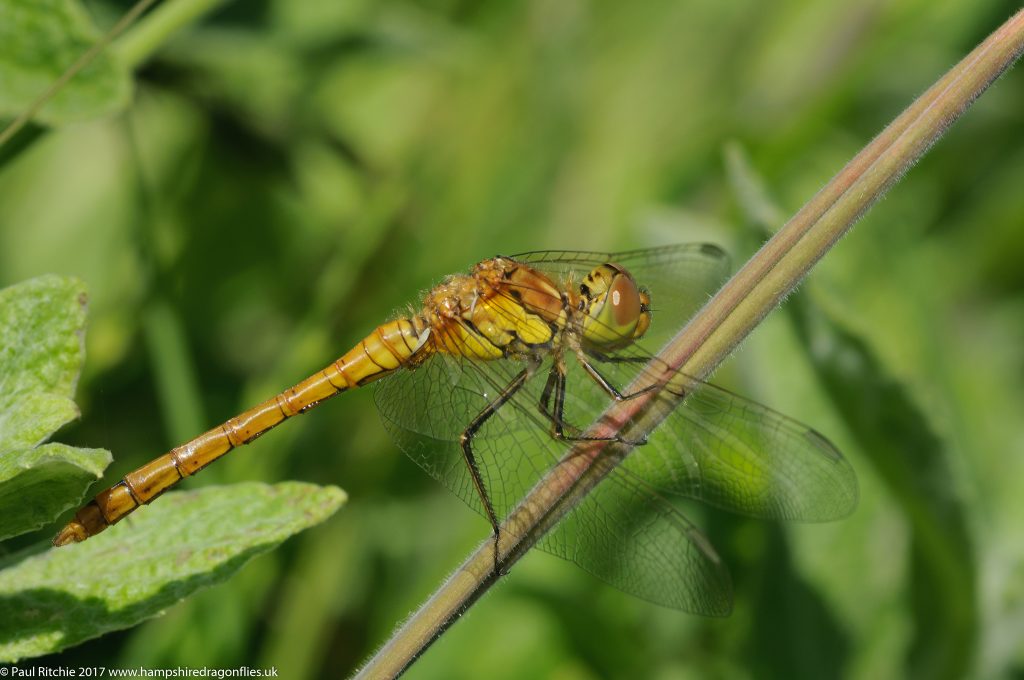Experience has taught me to forget those days which, although sunny, can be too cool or too windy to achieve satisfactory results. Tuesday was neither too cool or too windy but still disappointed. A lesson learned a few years back was to allow at least a day of sunshine before venturing out.
Of course cabin fever drives ambition and after several disappointing days of inclement weather the sun broke through, and I decided to take a trip to Priddy Mineries to connect with a favourite, the Moorland (Common) Hawker (Aeshna juncea to sticklers).
The journey, naturally delayed before I even left Southampton, was predictably slow due to the granny chariots choosing to leave at the same time as yours truly to do whatever they choose to do. Hold up traffic on the A36 perhaps?
Thankfully the journey is part of the experience, and the chance to drive through delightful countryside whilst stepping back in time to a slower pace of life should at least be rewarded with a pot of gold at the end of a rainbow?
Unfortunately not today. The weather was perfect; just the occasional light, white whispers of cloud adjusting the temperature comfortably and allowing the Emperors to cease their endless patrols and perch up for a short while.
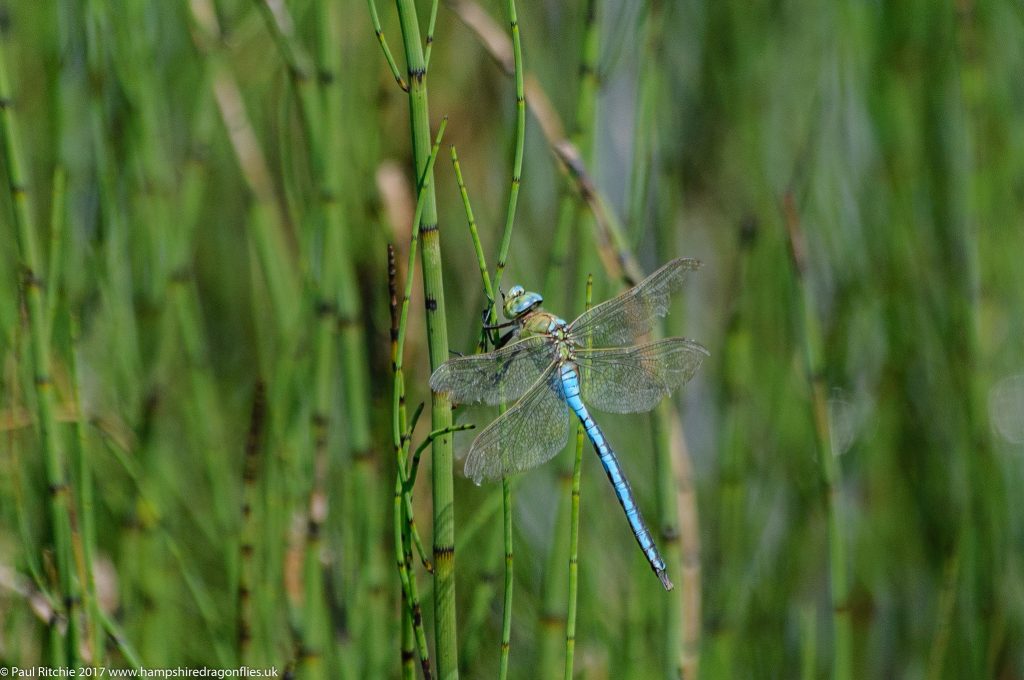
They certainly needed it! Every single male I saw were battle-scared and tired after a long session of territorial disputes with their own and others. Likewise the Chaser and Skimmers. Only the Darters looked pristine; Ruddy, Black and Common at the start of their dominance.
Talking of Skimmers I found a male Keeled at the boggy corner, the first time I have seen this species at this site and good news for Somerset to potentially have a new colony.
I chose today because a few years back we had the most spectacular display of Moorland Hawkers around the boggy corner. As it was there was only a brief showing of a male here, another at the entrance, a couple way too far over water for engagement and a female tentatively ovipositing around the margins.
I must have surrounded the pond half-a-dozen times looking for agreeable subjects and I even popped across the road into the woods in case they were hiding out. Two Migrant Hawkers were; a male and female hunting along the treeline, both immature and not ready for the pond just yet.
It was gone lunchtime before I found a Moorland I could engage with. His territory patrol consisted of flying out in a descending arc towards the center of the pond from the margins, rinse, repeat and occasionally come into shore to start his descent from the treeline.
Difficult to pick out against the foliage, the contrast played havoc with the light meter – remember you don’t have time to adjust when tracking – resulted in a rather pleasing image.
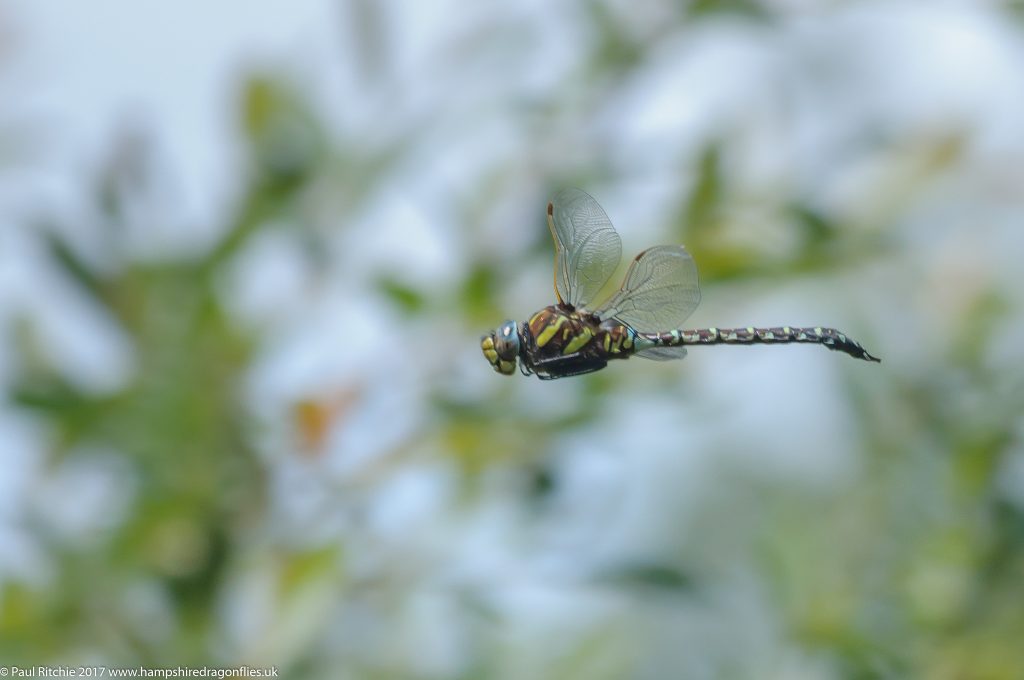
It wasn’t long before he too flew out of reach and opportunity so I took another stroll around the pond, stopping a while to observe e female Brown Hawker ovipositing into the perfect log.
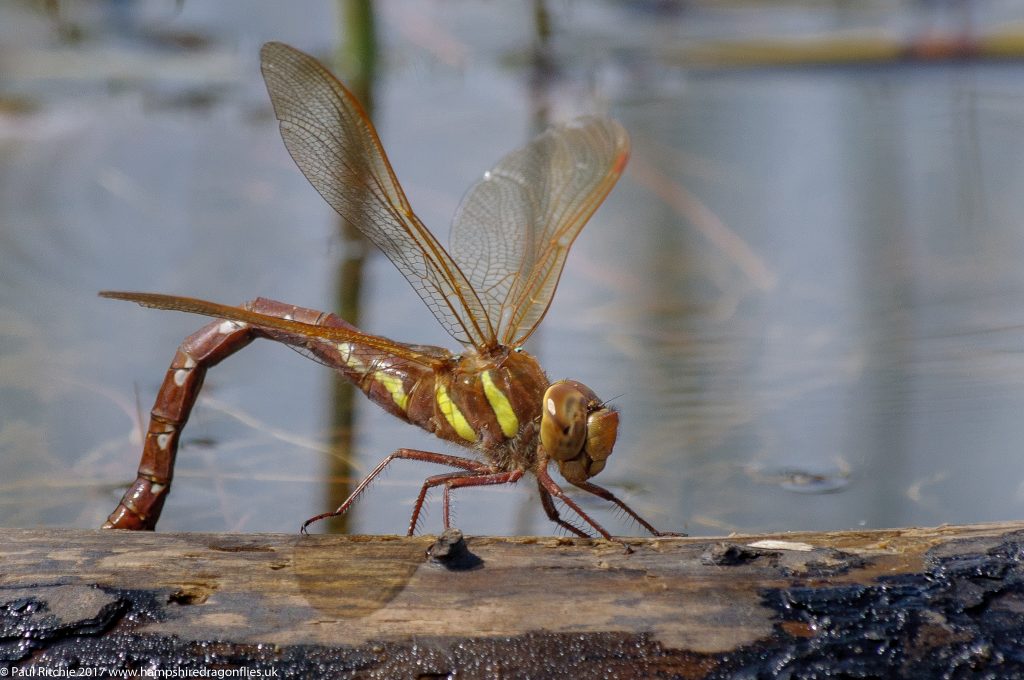
That’s a long trip for little reward, but I’ve had worse. I shall return!

